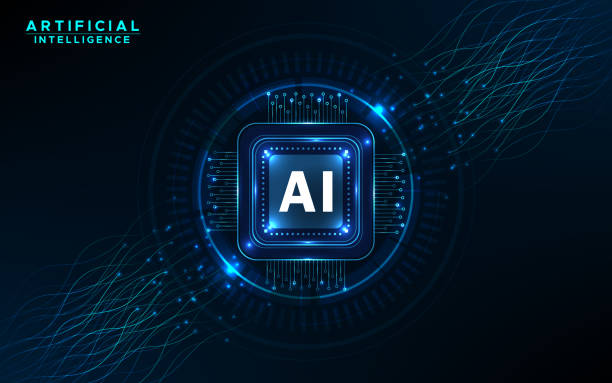
Introduction
Intelligence is a multifaceted and complex trait that encompasses various abilities, such as reasoning, problem-solving, learning, and adapting to new situations. It has been a subject of intrigue and study for centuries, inspiring countless theories and models that seek to define and measure it. In today’s world, the concept of intelligence extends beyond human capabilities to include artificial intelligence (AI), a rapidly evolving field that is transforming our understanding of cognitive processes. This post delves into the nuances of intelligence, exploring its different dimensions, measurement methods, and the interplay between human and artificial intelligence.
ShopingCheckout | TrendhubTreasure | DigiNetTrail | WebSpacedDesign | MarketingGlobalNews | findmylinksnow | ladyboydubai
Theories of Intelligence
- Spearman’s General Intelligence (g Factor)
One of the earliest theories of intelligence was proposed by Charles Spearman in the early 20th century. He introduced the concept of general intelligence, or the “g factor,” which posits that a single underlying cognitive ability influences performance across various intellectual tasks. Spearman’s theory suggests that individuals with high general intelligence tend to excel in multiple domains, reflecting a core cognitive capability that underpins diverse mental functions.
- Gardner’s Multiple Intelligences
Howard Gardner’s theory of multiple intelligences, introduced in the 1980s, challenges the notion of a singular general intelligence. Gardner proposed that intelligence is not a single entity but rather a collection of distinct modalities, each representing different ways of processing information. His model includes eight intelligences: linguistic, logical-mathematical, spatial, musical, bodily-kinesthetic, interpersonal, intrapersonal, and naturalistic. Gardner’s theory emphasizes that individuals have unique strengths and weaknesses across these domains, promoting a more personalized understanding of intelligence.
- Sternberg’s Triarchic Theory
Robert Sternberg’s triarchic theory of intelligence, also developed in the 1980s, further expands the conceptualization of intelligence. Sternberg identified three components: analytical, creative, and practical intelligence. Analytical intelligence involves problem-solving and logical reasoning, creative intelligence pertains to innovation and adapting to novel situations, and practical intelligence refers to the ability to handle everyday tasks and real-world challenges. Sternberg’s model underscores the importance of context and adaptability in defining intelligence.
Measuring Intelligence
- IQ Tests
Intelligence Quotient (IQ) tests are among the most widely used tools for measuring cognitive abilities. Developed in the early 20th century by Alfred Binet and Théodore Simon, IQ tests assess a range of skills, including verbal comprehension, mathematical reasoning, and spatial visualization. The results yield an IQ score, which is intended to represent an individual’s relative cognitive abilities compared to the general population. Despite their widespread use, IQ tests have been criticized for potential cultural biases and limitations in capturing the full spectrum of intelligence.
- Standardized Achievement Tests
Standardized achievement tests, such as the SAT and ACT, are commonly used in educational settings to assess students’ academic proficiency and readiness for higher education. While these tests focus primarily on specific knowledge and skills, they are often considered indirect measures of cognitive abilities and intelligence. However, like IQ tests, they face scrutiny for their cultural and socioeconomic biases.
- Alternative Assessment Methods
In response to the limitations of traditional IQ and standardized tests, alternative assessment methods have emerged. These include dynamic assessment, which evaluates learning potential and cognitive processes through interactive and adaptive tasks, and performance-based assessments, which involve real-world problem-solving and practical tasks. These approaches aim to provide a more comprehensive and equitable measure of intelligence by considering diverse cognitive abilities and learning styles.
Human vs. Artificial Intelligence
- Defining Artificial Intelligence
Artificial intelligence (AI) refers to the simulation of human intelligence in machines that are programmed to think, learn, and adapt. AI systems use algorithms and computational models to perform tasks that typically require human intelligence, such as language processing, image recognition, and decision-making. The development of AI has led to significant advancements in various fields, from healthcare and finance to transportation and entertainment.
- Machine Learning and Deep Learning
Machine learning, a subset of AI, involves training algorithms to recognize patterns and make predictions based on data. It enables machines to improve their performance over time through experience. Deep learning, a more advanced form of machine learning, uses artificial neural networks with multiple layers to process complex data and achieve higher levels of accuracy. These technologies have revolutionized AI, enabling the creation of sophisticated systems that can perform tasks previously thought to be exclusive to human intelligence.
- Comparing Human and Artificial Intelligence
While AI has made remarkable strides, it differs fundamentally from human intelligence in several ways. Human intelligence is characterized by emotional awareness, creativity, and consciousness, aspects that AI currently lacks. Additionally, humans possess a depth of understanding and contextual awareness that enables nuanced decision-making and moral reasoning. AI, on the other hand, excels in processing vast amounts of data quickly and accurately, performing repetitive tasks without fatigue, and identifying patterns beyond human capabilities.
- Ethical and Societal Implications
The rise of AI also raises important ethical and societal questions. Issues such as data privacy, algorithmic bias, and the potential for job displacement due to automation need to be addressed. Ensuring that AI systems are developed and deployed responsibly requires careful consideration of these challenges and the establishment of ethical guidelines and regulations.
Conclusion
Intelligence is a rich and multifaceted construct that encompasses a wide range of cognitive abilities and processes. From early theories of general intelligence to contemporary models of multiple and triarchic intelligences, our understanding of human intelligence has evolved significantly. The emergence of artificial intelligence adds a new dimension to this understanding, highlighting the potential and limitations of machine-based cognition. As we continue to explore the nature of intelligence, it is crucial to embrace a holistic perspective that acknowledges the diversity of cognitive abilities and the ethical implications of AI advancements. This comprehensive approach will enable us to harness the full potential of both human and artificial intelligence for the betterment of society.
